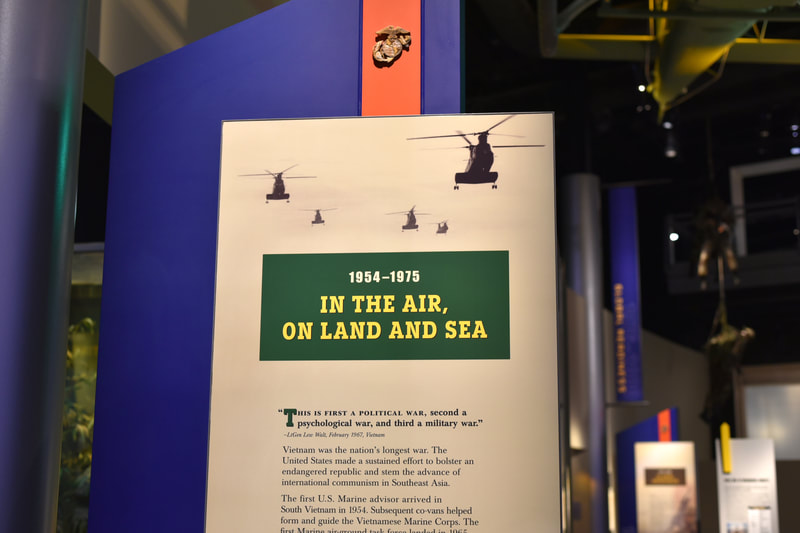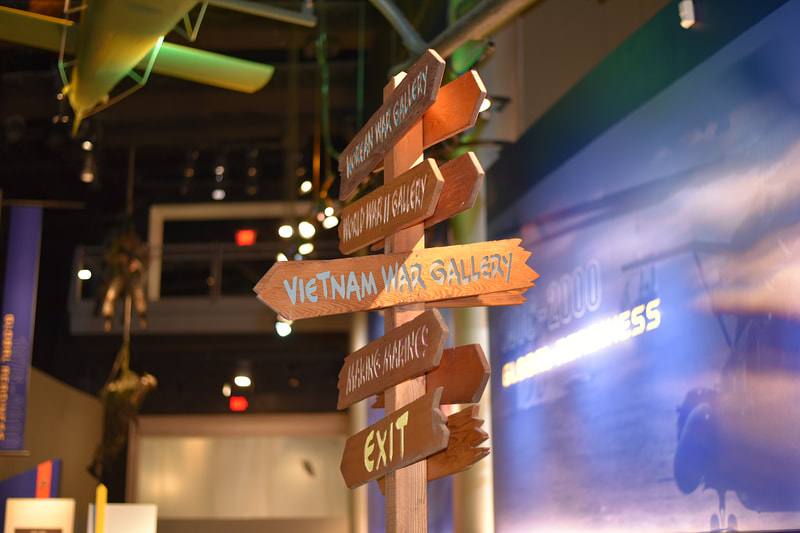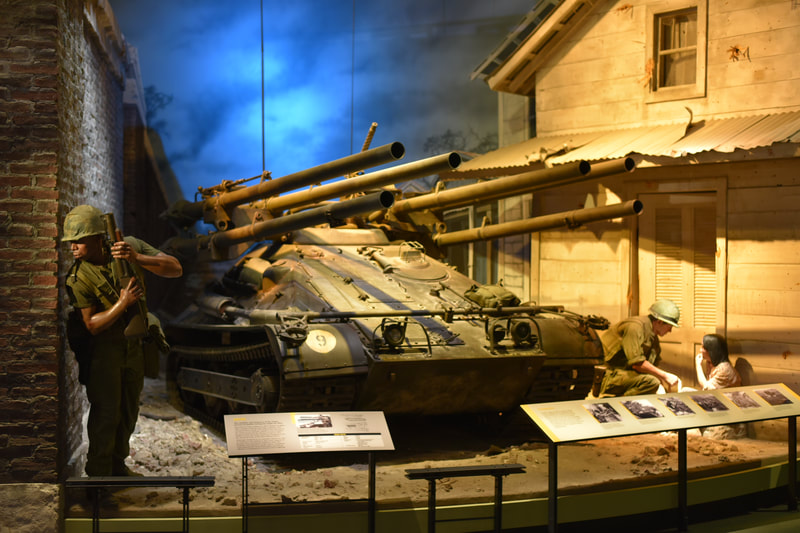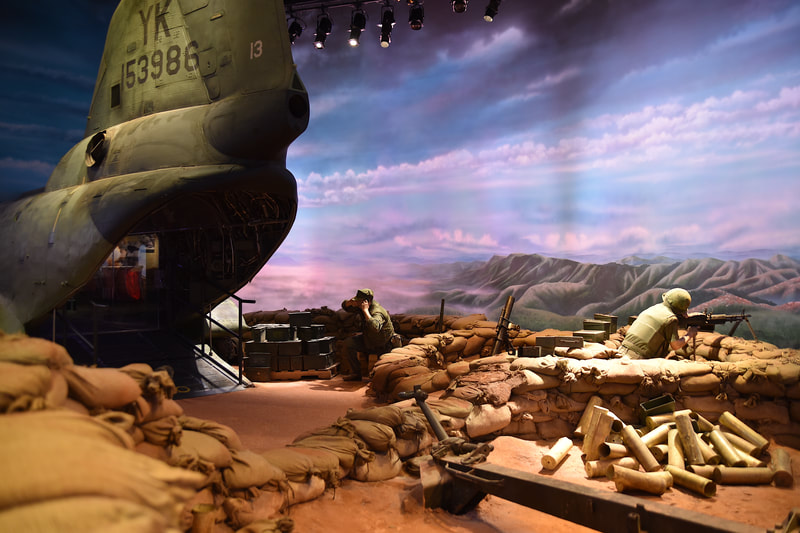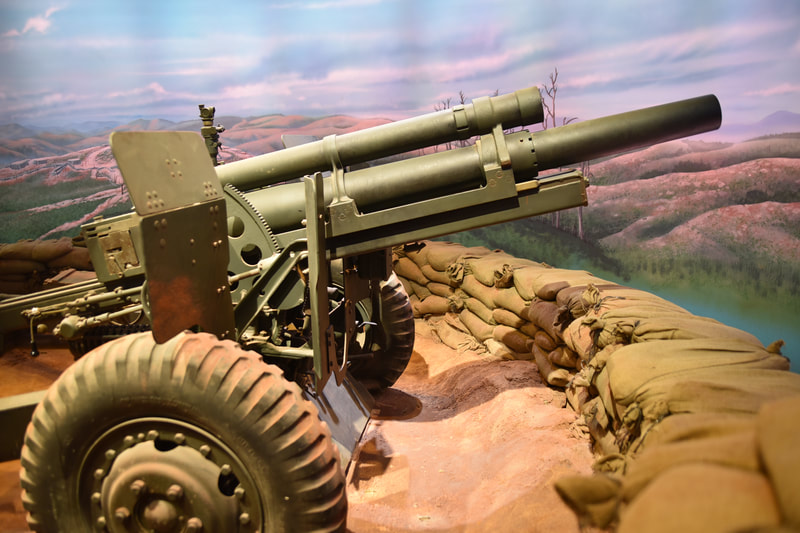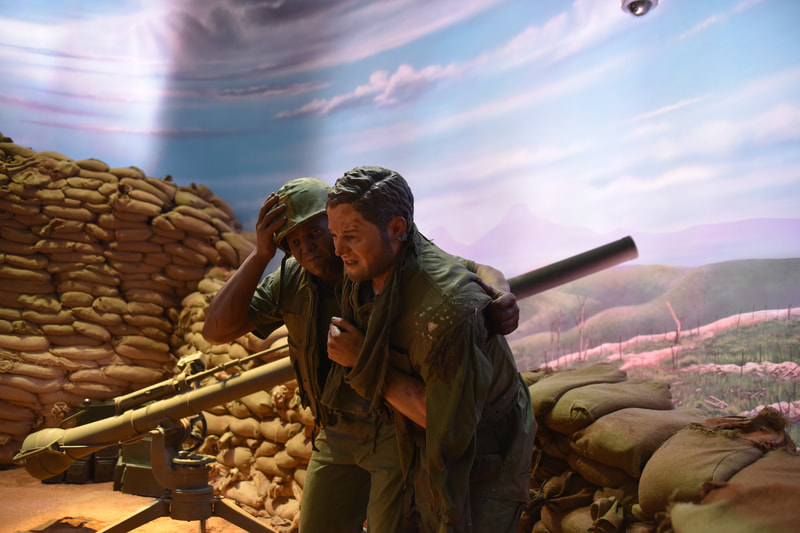Vietnam War: 1954–1975
The Marine Corps entered Vietnam in 1965 with two battalions, not expecting that this war was to become the longest in the Corps’ history. The Marines and their Allies fought both Viet Cong guerillas and North Vietnamese Army forces in hamlets, urban areas, jungles, and rice paddies. This gallery brings to life horrific scenes of close combat and small moments of compassion on the field of battle at such places as Howard’s Hill, Marble Mountain, Quang Nam, Khe Sanh, and Dong Ha. Wall murals and dioramas deliver stories about combat operations, significant contributions to the war, individual Marines, special units, morale, and air support.
Visitors enter the battle through a series of immersive exhibits and are introduced to the weapons and equipment used by the combatants, from the simple sharpened bamboo stake to the highly sophisticated Ontos anti-tank vehicle. An A-4 Skyhawk and the ever present UH-1 Huey helicopter represent the air war. Marines move block by block, house by house wresting control of Hue City from enemy forces while also caring for innocent civilians caught up in the battle. Visitors are airlifted into the “hot” landing zone at Hill 881 South near Khe Sanh on a CH-46 helicopter. Rotor wash swirls the hot air and the sounds of combat surround visitors as they step off the helicopter’s rear deck. Making his way to the CH-46 is a wounded Marine while another lies dead in this austere and dangerous scene. From 1965 to 1975, almost 500,000 Marines served in Southeast Asia; nearly 13,000 were killed and 52,000 wounded.
Visitors enter the battle through a series of immersive exhibits and are introduced to the weapons and equipment used by the combatants, from the simple sharpened bamboo stake to the highly sophisticated Ontos anti-tank vehicle. An A-4 Skyhawk and the ever present UH-1 Huey helicopter represent the air war. Marines move block by block, house by house wresting control of Hue City from enemy forces while also caring for innocent civilians caught up in the battle. Visitors are airlifted into the “hot” landing zone at Hill 881 South near Khe Sanh on a CH-46 helicopter. Rotor wash swirls the hot air and the sounds of combat surround visitors as they step off the helicopter’s rear deck. Making his way to the CH-46 is a wounded Marine while another lies dead in this austere and dangerous scene. From 1965 to 1975, almost 500,000 Marines served in Southeast Asia; nearly 13,000 were killed and 52,000 wounded.
We are always happy to hear from you Get in touch
THE MUSEUM IS OPEN! PLAN YOUR VISIT HERE.
National Museum of the Marine Corps
1775 Semper Fidelis Way Triangle, VA 22172 Toll Free: 1.877.653.1775 |
VISIT
RESEARCH |
LINKS
|
JOIN US ONLINE!
|
©
Copyright 2021. Admission to the National Museum of the Marine Corps is FREE. Hours are 9:00 AM to 5:00 PM every day except Christmas Day.

